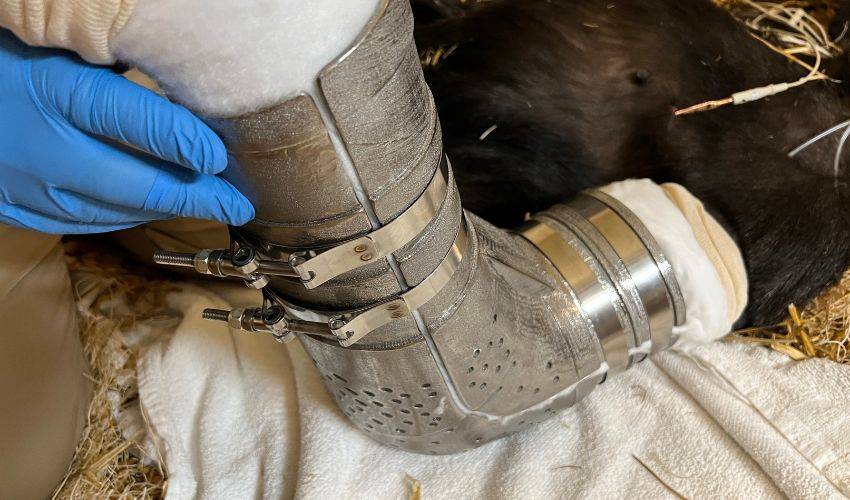Additive manufacturing has long been known for its benefits in creating prosthetics and orthotics for humans, but the technology is also proving useful for one of humanity’s closest relatives: gorillas. Cincinnati Zoo recently announced that Gladys, an 11-year-old gorilla, received a world-first titanium 3D-printed cast to aid in the healing of a broken arm. This customized cast, stronger and more durable than traditional ones, is designed to withstand the stress of a gorilla’s daily activities, ensuring a smoother recovery process over the course of six weeks.
Gladys sustained a complete oblique fracture of her humerus during a scuffle with two younger females in her troop. Given the severity of the fracture, the zoo’s veterinary team enlisted the help of expert surgeons and anesthesiologists from local hospitals. They quickly realized that Gladys’s original cast lacked durability, leading them to collaborate with GE Additive (now Colibrium Additive) to create a titanium 3D-printed cast that could withstand the gorilla’s strength.
Shannon Morman, an advanced lead engineer at GE Additive, led the effort to create the custom cast. The rapid prototyping capability of 3D printing allowed the team to work quickly, creating a 3D model of the original cast on Monday and starting the printing process the same day. The titanium cast, which took about 65 hours to print, was delivered to the zoo within a week. The final result is an 8-pound cast, designed to be more “gorilla-proof” than traditional casts, ensuring Gladys can move safely and comfortably during her recovery.
Victoria McGee, Cincinnati Zoo’s zoological manager of primates, explained that the titanium cast, while not Gladys’s favorite thing, has been better tolerated than the temporary one. Gladys has been able to move freely, adapting her movements to the new cast. The durability of the titanium cast has also allowed Gladys to access more spaces safely, providing her with greater choice and exploration during her recovery.
The use of titanium, one of the strongest and most biocompatible materials, ensures the cast’s durability and comfort. This innovative approach not only benefits Gladys but also demonstrates the potential of 3D printing and additive manufacturing in veterinary care.\
Subscribe to AM Chronicle Newsletter to stay connected: https://bit.ly/3fBZ1mP
Follow us on LinkedIn: https://bit.ly/3IjhrFq
Visit for more interesting content on additive manufacturing: https://amchronicle.com


